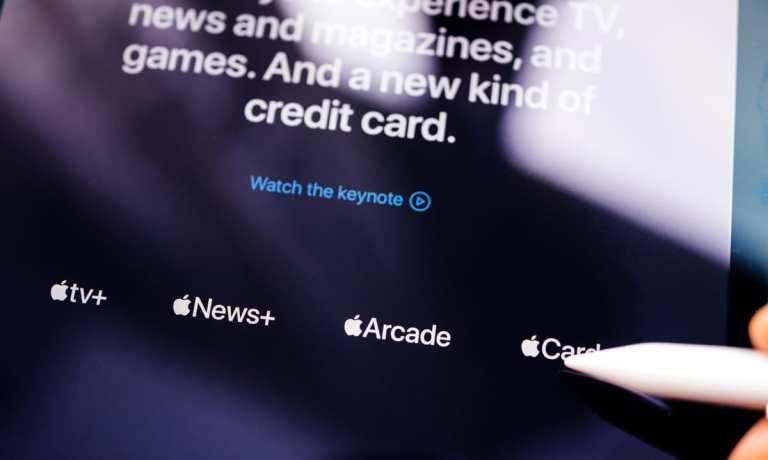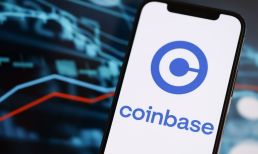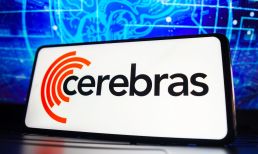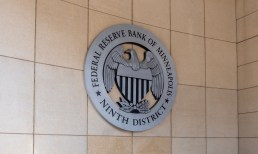If earnings season tells us anything, it’s that amid the slew of data – the revenues, the margins, the headcount, the operating cash flow, and on and on – the devil is in the details.
And sometimes, when it comes to detail, less is, well, less.
Take Apple, for example. The bellwether tech name put up fiscal fourth-quarter numbers on Thursday (Oct. 29) that showed some positive results on the hardware front (though, it should be noted, not across the board). Mac sales were up 28 percent to $9 billion; iPads outpaced that trend, gaining 46 percent to $6.8 billion. Wearables, home and accessories were up 20 percent year on year. In evidence of hardware headwinds seen elsewhere, iPhone production delays have pushed the newest 5G phones into the current period, where that segment saw sales down by 21 percent year on year. Wearables, according to the firm – specifically the Apple Watch – continue to broaden reach. More than 75 percent of the customers purchasing the Apple Watch during the quarter are new to that offering.
Looking for the Services Pivot
But it’s well-known that Apple has pivoted toward becoming a more services-oriented company, which theoretically means that recurring, higher-margin businesses (services gross margins are around 66 percent; products are roughly 30 percent) should reduce the unevenness of banking on (sometimes fickle) consumers clamoring for the next phone or new gadget.
Advertisement: Scroll to Continue
And as noted in the latest report, services segment revenues were up 16 percent, to $14.5 billion. And here is where things get a bit hazy. The services segment is where we find a number of new (and newish) initiatives, spanning AppleCare, Apple Pay, iCloud and Apple subscriptions.
But not much was noted about where those lines of business are contributing to the segment’s performance overall – and, by extension, Apple’s strategy to expand its ecosystem well beyond the confines of hardware.
On the conference call with analysts, CEO Tim Cook noted that “this was a record quarter for the App Store, AppleCare, cloud services, music and payment services. The App Store in particular continues to play an essential role in helping small businesses, educational institutions and workplaces adapt to COVID-19.” Later on the call, CFO Luca Maestri said “the key drivers for our services growth all continue to be moving in the right direction.”
With some granularity of detail, Maestri noted that paid subscriptions grew more than 35 million sequentially, and Apple now has over 585 million of them across the services on its platform, up 135 million from just a year ago.
“With this momentum, we are very confident to reach and exceed our increased target of 600 million paid subscriptions before the end of calendar [year] 2020,” said Maestri, who also noted that the services gross margin had expanded 300 basis points year on year.
The much-anticipated bundles offering has yet to impact, well, anything – as it’s just debuted. Cook noted on the call that Apple One, which launched today, brings services across music, TV, news, fitness and others across different plan choices that take … some of this, and some of that.
Paying for It All
There’s no hardware bundling, at least not for now. But as Cook gave a nod to how people want to pay for these devices (which, we note, can stretch into the four figures).
“We do view that people like to pay for their hardware, at least some substantial portion of it, monthly. And so that’s the reason we have implemented installments in our stores and online,” Cook told analysts. “And that’s the reason you see in some of the channels, selling the hardware on a per-month kind of basis. That begins to look like a subscription, perhaps to some buyers, because they’re used to holding the phone for a period of time and then turning it over and using the residual value of that phone in a way that gives them a de-facto kind of subsidy on a new phone.”
Against that backdrop, Cook noted that when it comes to payments – and in response to an analyst’s question on Apple Card, Apple Pay and Apple Cash – “there are just a limited number of things I can talk about is kind of a reason I didn’t talk about it. We continue to be very enthusiastic about the whole payment services area. Apple Card is doing well. And Apple Pay is doing exceptionally well. As you can imagine in this environment, people are less wont to hand over a card. So this contactless payment has taken on a different level of adoption in it that I think will never go back.”
The U.S., he said, is lagging a bit in contactless payments, but the pandemic may put the country on a different trajectory.
And it’s interesting to note that the qualitative detail is the detail we got.
But recent PYMNTS research shows that, among other data points, there has been a 59 percent increase in the use of Apple Pay at the point of sale at eligible store locations since the pandemic hit U.S. shores in March. Roughly 8 percent of users with Apple Pay-enabled phones are making use of the service, up from the roughly 5 percent who were doing so in March – equating to roughly $65 billion in in-store transactions.
We wonder why the various revenue streams that feed into the services segment may not be getting the spotlight that they’d otherwise get with, well, concrete numbers.
And the fact remains that the payments offerings, the subscriptions and the eventuality of the bundling may not move the needle all that much – not yet, anyway.
Assuming the Google deal that brings Apple $12 billion annually (to make Google the default search engine on Apple devices) is divvied up evenly through the year, with the implication that Apple gets about 21 percent of its services revenues from that deal.
Stripping out that revenue stream – allowing for some puts and takes that are hidden in data that simply is not disclosed – implies that on a $65 billion total (quarterly) top line, only 17 percent really comes from services, strictly defined as what consumers are buying and trying.
Which brings us to this point: Hardware is still the name of the game for Apple, and becoming anything else is going to take lots of time. Money, too, of course – but time above all else.




